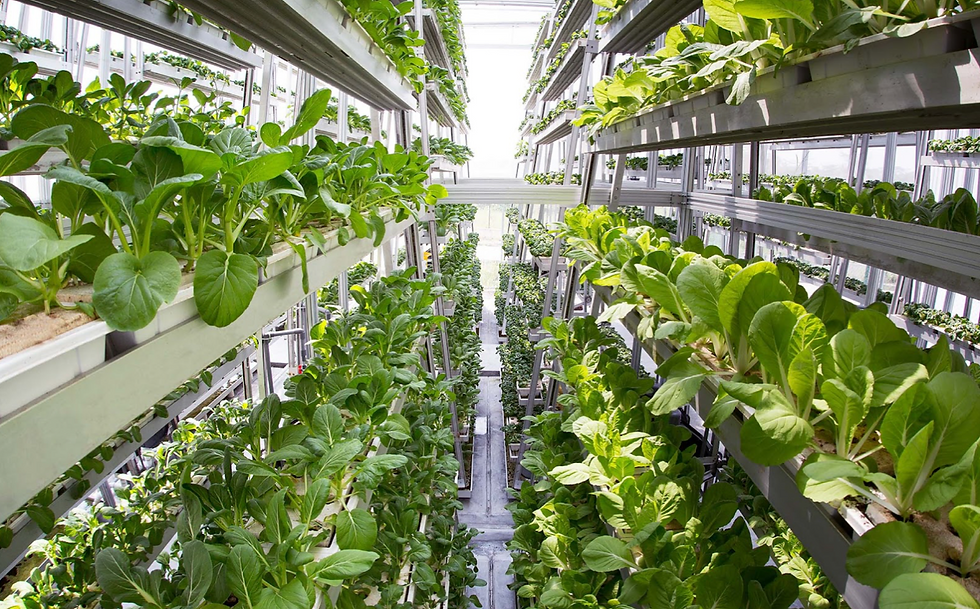Sky Urban Vertical Farming System

Image credit: Sky Greens
Materials
Vegetables, water, sun, urban infrastructure
Labor
Ongoing research into the working conditions of those developing, building, and farming in the vertical farming system
Creators
Sky Greens company led by Mr. Jack Ng, Inventor and Founder of Sky Greens
Uses
Grow and provide food for urban environments
Access
Ongoing research into who can access the food grown in the farming system
Equality
Working to secure food for those living in Singapore; ongoing research needed to understand who in Singapore benefits from the food production.
Life cycle
The SUVFS is advertised as low-carbon but no third parties have verified this claim
Do you have something to add? Let us know! info@m21d.org
Feeding Cities without the Environmental Cost of Production and Import
How humans eat significantly impacts climate change. Food production and distribution contributes around 37 per cent of global greenhouse gas emissions, according to a study run by Dr. Atul Jain at the University of Illinois. But not all foods contribute equally. CO2 emissions from most plant-based products rank 10-50 times lower than most animal products. It’s clear from available data that consuming less meat is the most impactful way to decrease greenhouse gasses, because raising animals — especially cows — requires an enormous amount of grazing land and feed.

Along with the type of food, the length and method of transportation contributes to the production of greenhouse gasses. According to State of the Planet, conventionally produced food might travel on average 1,500 miles over water, rail, and road before being purchased. A study from 2008, “Food-Miles and the Relative Climate Impacts of Food Choices in the United States,” analyzed production, transportation, and distribution of food in the US to find that transportation accounts for 11 percent of food’s greenhouse gas emissions.
The Sky Urban Vertical Farming System works to counter the poor impact of both land production and transportation.

Photo courtesy of Sky Greens
The Sky Urban Vertical Farming System includes 38 layers of troughs filled with leafy vegetables in a rotating A-frame structure that uses hydraulic technology and gravitational principles to maintain a greenhouse almost nine meters tall. The structure weighs 1.7 tons and requires only 0.5 liters of water per day. The system also reuses water once the cycle is complete. Using minimal land, water and energy resources, the system provides fresh, locally grown vegetables, and has a dramatically smaller carbon footprint than imported produce.
The first experimental round of growth was celebrated as a success across publications in January 2011. Commercial operation began in 2012, and similar farms have appeared across the globe since. Kalera, a company building and running such farms, has installed them across the US, in cities including Denver, Atlanta, Orlando, Seattle, Honolulu, St. Paul, Columbus, and Houston. German agri-tech firm Infarm is peppering European and American cities with large vertical farms and farms within restaurants. And Taiwan is now utilizing unused metro stations as vertical farms.
Redesigning Farms to Save Space for Communities
Decreasing the amount of “food miles” not only decreases the amount of C02 produced. One benefit is that it keeps nutrient cycles at a local level. Jennifer G. Phillips, assistant professor at the Bard Center for Environmental Policy, and formerly a researcher at the Earth Institute’s International Research Institute for Climate and Society, noted that a key environmental benefit of vertical farming is that it doesn’t upset a region’s natural nutrient balance. Buying locally also benefits local communities by keeping money circulating through local farmers and consumers. Deconstructing conventional farming components and refiguring them into the urban fabric offers hope for the future of city livelihood.
M21D and Sky Urban Vertical Farming System
The structure has received several awards that acknowledge its careful use of water and its success in growing more than ten times the amount of produce that could be grown on flat land. Open questions remain as to the cost of production, how many people it actually serves, and just how low-carbon it actually is.
Resources
About Us, Sky Greens
The benefits of eating local foods, McGill University
Does eating local food reduce the environmental impact of food production and enhance consumer health?, Gareth Edwards-Jones
How to reduce your food’s carbon footprint, in 2 charts, Vox
Food-Miles and the Relative Climate Impacts of Food Choices in the United States, Christopher L. Weber and H. Scott Matthews at the Carnegie Mellon University
How Green is Local Food?, State of the Planet Columbia University
Sky Urban Vertical Farming System, The Index Project
